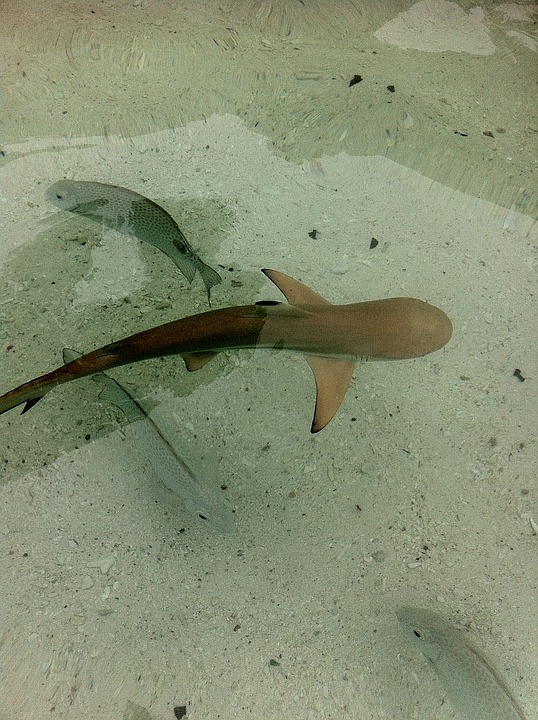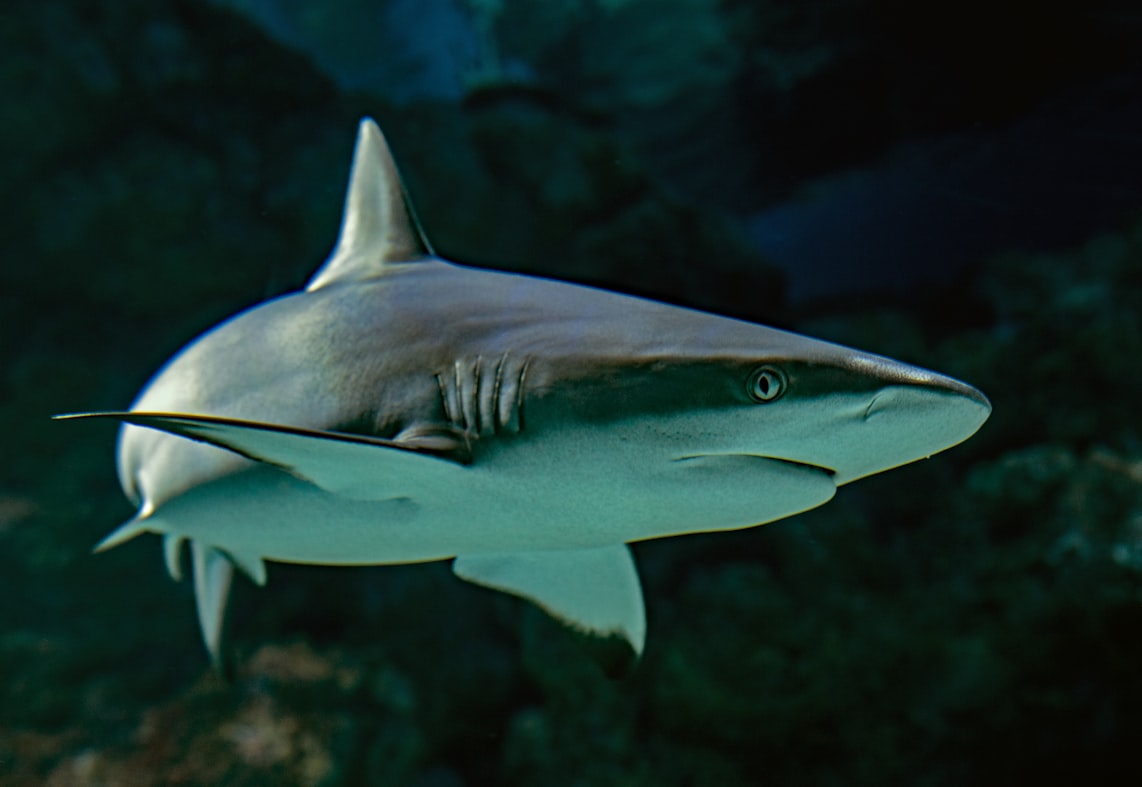As an Amazon Associate I earn from qualifying purchases.
What Do Baby Sharks Eat?
The term “pup” is a colloquialism for newborn sharks, appropriately known as babies. The diet of baby sharks comprises the identical foods that adult sharks consume. Despite species, geographical locations, and availability, most shark pups ingest fish, crustaceans, mollusks, krill, and seals.
The total number of known shark species is more than 465. Most of these are ovoviviparous, which means the fertilized egg remains inside the mother’s oviduct until it hatches. The oviduct incubates and hatches the egg. It grows fully formed and functional from the ovaries. Some shark pups, while still in the oviduct, consume other eggs that are about to hatch.
Oviparous and viviparous methods of reproduction are used by other shark kinds. The egg is dropped into the water, encased in a protective egg case, and then the entire process begins again. The baby shark hatches completely formed and alone. Viviparous birth implies that the shark pup develops within the mother and has a placental link to her, allowing him or her to receive nourishment and remove waste. These sharks are born via a live delivery method comparable to that of humans.
Once a baby shark pup is created, it is entirely on its own. The mother has no interest in it. Shark pups are born as substantial adults with a full set of teeth and are able to go out and find their own food straight away.
What Do Baby Sharks Eat?
Depending on the number of species, the eating habits of sharks are quite diverse. The fact is that most sharks are meat-eaters and successful hunters, although some eat plankton.
There are many types of sharks, and each species has its own way of eating. The type of shark you’re hunting will affect the method in which they feed. Depending on where they live, certain types of sharks may consume different forms of prey.
The shark diet adapts to survive, and it also adjusts to meet new circumstances. Some shark species prefer specific types of prey, but when there is a scarcity, they adapt their diets to whatever is accessible.
Sharks are not selective about their food sources. Coal, rubbish, oil, and clothing have all been consumed by sharks.
Sharks are divided into two categories based on their food: b
Carnivorous Sharks

Carnivorous sharks eat fish, crustaceans. and mollusks. Larger species also consume marine mammals such as dolphins, sea lions, seals, and porpoises as well as huge fish species like mackerel, tuna, and even smaller shark species. Some people go so far as to eat seabirds.

Sharks that consume only meat are known as carnivorous sharks. They employ a variety of techniques to catch their prey, which they often do in tandem. Bigger species may swallow an entire creature or tear them apart with powerful bites to take larger pieces. Some species, such as the thresher shark (Alopias), stun their prey with their tails while Sawsharks (Pristiophoridae) twist their catch inside the sand.
Many of the ocean floor’s sharks are predators that ambush their prey or hide in disguise in their natural setting. Other benthic sharks might only consume crustaceans, which they kill by smashing against their teeth with a powerful bite. It’s also typical for some species to work together to gather larger plunder than they could on their own.

Sharks’ hunting patterns assist the survival of the fittest or the most adapted to their environment since they frequently prey on older, weaker, or ill individuals. As a result, the strongest thrive while the most fragile perish.
Carnivores, like this bigeye thresher, have sharp teeth that allow them to quickly cut through their prey flesh and even bone. Their teeth may be smooth or serrated, depending on the needs of each species, and they are used to hold, cut, or smash a victim. The teeth of tiger sharks, on the other hand, have jagged edges that help them to bust hard crustacean shells.
PLANKTIVORE SHARKS

Even though they are not aggressive, these sharks subsist on plankton and do not conform to our preconceptions about them. However, it is true, and in fact, some of the larger sharks enjoy plankton better than meat. Carcharodon carcharias, or the great white shark (C. megilla), is one of the most well-known sharks in fiction and reality, with its distinctive mouth resembling that of an alligator’s jaws. The dwarf lanternshark (Etmopterus perryi) is another example, as are several other species.
Like whale beards, the feeding method of sharks is suctioning water and filtering the food through long fibers. When some amount of plankton accumulate in the filaments, sharks capture them and consume them. The peregrine shark, which has the shortest exposure time of any great white shark, removes approximately 2 million liters of water per hour and filters out only 2 kilograms of plankton. Their teeth are tiny; they do not utilize them in feeding.
All sharks are omnivores by nature, some to a greater extent than others. Their chewing capacity is poor, and they need a long time to digest their meals, therefore they only consume 0.5 to 3.0 percent of their body weight every day.
The digestive system of sharks is incompatible with that of mammals, which is why digestion takes so long. They have a spiral valve in a short section of their intestines, and their intestine length is relatively small. Food is stored in the final section of the stomach, where it begins to be digested after it passes from the mouth to the stomach. If a shark believes that any tainted food has been consumed, it will not be digested by the stomach and will subsequently be ejected through its mouth.
Do Baby Sharks Eat Each Other At Birth?

A gravid shark pup’s diet is based on the yolk, and when an embryo has used up its own yolk sac, it turns to the eggs surrounding it. Some creatures undergo intrauterine cannibalism, eating the fertilized or unhatched eggs within their wombs.
The sand tiger shark is the most well-known intrauterine cannibal. Despite having two uteri and generating a large number of eggs, only two pups are produced from each litter; one from each womb. That’s why, as the sharks develop their embryonic teeth, they begin to consume the other embryos, killing their unborn brothers and sisters as well as the unhatched eggs. It’s survival of the fittest in the womb until only one shark remains till then. Sand tiger pups are born larger than other puppies thanks to their prenatal diet, with a length of three feet.
Cannibalism is also practiced by sharks, albeit to a far lesser degree than intrauterine cannibalism. Oophagy is the term used for the consumption of eggs that have not been fertilized by another shark species. Intrauterine cannibalism has been observed in at least 14 shark species.
Can Baby Sharks Be Kept As Pets?
While it is not suggested to keep any genuine shark species as an aquarium pet, some individuals who can afford big tanks and food nevertheless maintain them. Epaulet sharks, wobbegongs, catsharks, and a few other real shark species are kept by these people. Some of these sharks reach enormous sizes as adults and would not fit in any aquarium.
Keeping true sharks as pets is not popular in most places, and it is almost certainly against the law. However, keeping pet sharks has become a status symbol among the super-rich in certain areas, such as California. It appears that it is legal to keep certain species of genuine sharks in California.
How To Take Care of Pet Baby Sharks?
You must create an appropriate environment for the fish to live in since they are confined to a tank. Before you acquire your pet shark, you must first decide on the aquarium’s size. Small tanks under 55 gallons are classified as such because they present difficulties.
After your pet shark fish is accustomed to its surroundings, it will establish a claim to the territory. As a result, in order to care for them and provide them with a pleasant environment, you’ll need a big tank.
Take, for example, the freshwater rainbow shark. They may reach up to 6 inches in length and require at least 55 gallons of water to survive comfortably.
Temperature
Most species of sharks thrive at a temperature of 74 to 80 degrees Fahrenheit. There are, however, a few exceptions. The Chinese banned shark is one such example. They require a temperature of 60 degrees Fahrenheit to survive. You may use an aquarium heater to maintain a healthy temperature in your fish tank if you want to care for your pet shark
Acidity Level of Aquarium Water
The standard pH range for freshwater fish is 6.5 to 8. The hardness of the water should be between 2 and 10dKH. If you have hi-fin or Colombian sharks, their optimum pH level is higher by 0.3 units. To get that level, add a teaspoon of salt in 1 gallon of water.
Food For Pet Baby Sharks
You must provide your pet shark fish with a nutritious diet in order to care for it. You can make sure that your pet shark fish remain as comfortable as possible by maintaining what they eat and providing them with a well-balanced alternative.
Freeze-dried foods, granulated, flakes, and mixtures are just a few of the tasty alternatives you can offer your pets. Live or frozen brine shrimps, aquatic invertebrates, tiny fish, and worms are among the options.
The majority of wild shark fish are omnivorous and can survive on a wide range of foods in captivity. If you want to keep your fish healthy, it’s advisable to switch their diet every day.
Maintaining The Aquarium and Environment
For your pet shark fish, you must provide a safe and healthy environment. There are lots of objectives that you should accomplish if you want to care for your pets. Every day, it’s critical that you check the filter and other components, such as water temperature and acidity levels.
Make sure you check the water quality and pH levels in your tank for your weekly objectives. Every month, 10 to 25 percent of the total water volume must be replaced.
Is it Safe To Have More Than One Baby Shark in The Aquarium?

A variety of tankmates are used by many shark owners. There are a few things to think about before adding tankmates for your pet sharks. Rainbow and red tail sharks are extremely territorial, thus keeping them separated is the best way to keep them peaceful.
When they’re little, baby sharks can be kept together. However, as they grow older, they prefer to be kept alone. If you want to add other fish to your aquarium, make sure they’re from a lively variety. Because they’re natural predators that would chase any fish that approach their hiding place, choosing strong tank partners who can keep up with their speed is essential.
What Are The Natural Predators of Baby Sharks?
Sharks range in size from tiny, two-foot sand sharks to enormous great white sharks that can reach up to 20 feet in length. Most sharks feed on fish, octopi, squid, turtles, and other cold-blooded sea creatures, as well as the odd sea bird that has fallen asleep on the water. Some of the biggest and most vicious sharks, such as great whites and tiger sharks, prey on dolphins, seals, porpoises, sea lions, and other swimming creatures.
One shark can be devoured by another shark, with the bigger sharks consuming the smaller ones. In fact, sharks may be cannibals, with big members of a species eating up their smaller neighbors and relatives.
Even the hugest sharks must beware of the orca, also known as a killer dol. Even the huge white shark may fall victim to a hungry orca looking for a sushi supper, as you can see in the film.
Amazon and the Amazon logo are trademarks of Amazon.com, Inc, or its affiliates.

